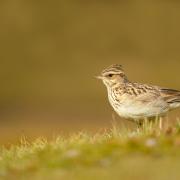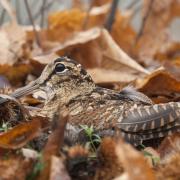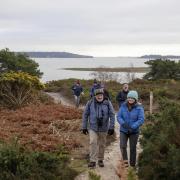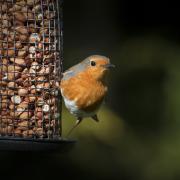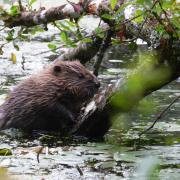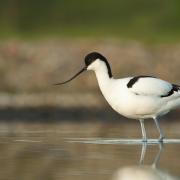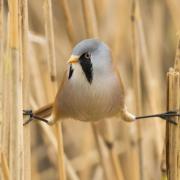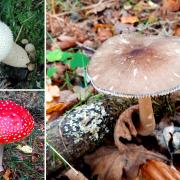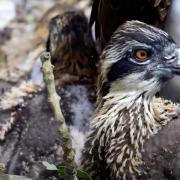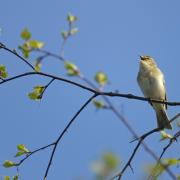The first osprey chicks in Southern Britain for nearly 200 years have successfully hatched in Poole Harbour. Paul Morton from Birds of Poole Harbour reveals how this modern day miracle of raptor conservation happened in Dorset and how to watch the two chicks on their nest cam
Regular readers of this column have been anxiously waiting for news from the osprey nest in Poole Harbour. A quick recap for those not up to speed: last month I reported that a pair of wild ospreys had laid three eggs at a secret nest site in Poole Harbour. This was the culmination of a seven-year project between Dorset-based charity Birds of Poole Harbour and conservation organisation the Roy Dennis Wildlife Foundation to re-establish breeding ospreys, a large fishing-eating bird of prey, in southern Britian after an absence of nearly 200 years.
We have had several false starts on this journey. Male osprey O22 and female osprey CJ7 paired up last summer, but were too young to successfully breed. The Osprey Project team, as well as members of the public were on tenterhooks in the early spring, eagerly awaiting the safe return of CJ7 and 022. They arrived in early April and got straight down to business resulting in a clutch of three eggs, laid between April 23 and 29.
The first chick made its timely arrival on June 1. We could see CJ7 moving a half-egg shell around the nest so we knew it had hatched. The second made its appearance a few days later over the Jubilee Bank Holiday weekend. On June 6, two chick heads could just be seen on the osprey nestcam as the adults fed them. The question is whether the third egg will hatch.
The new parents are doing an amazing job. CJ7 kept the eggs and then the newly hatched chicks warm, the latter was critical due to the wet and windy weather. O22 is now the sole provider of food and he’s been coming back to the nest with freshly caught grey mullet and flounder. We’ve seen him tearing off little pieces of fish and pitching in with feeding. Great parenting!
If you are watching on the live nestcam feed you may not see the chicks yet as they will stay low in the nest for the first few weeks. But by mid-June they should be visible as they grow and build in strength.
Once fledged, about 50 days after hatching, the chicks will stay for several more weeks, flying around and imprinting on the local area, just as their father O22 did when he was their age, before instinct kicks in and they leave on migration. After two years, pending their safe migration down to West Africa and back the youngsters should then return to Dorset and in time will start families of their own, therefore establishing a new colony of breeding ospreys here in Dorset.
Words don’t even begin to describe what this means to us, and osprey conservation in Western Europe. We started our licence application in 2015, and the actual reintroduction in 2017. At that time the prospect of actually having wild hatched chicks in a nest always felt so far away. But here we are, with the first wild osprey chicks for Southern Britain since 1847, right here in Poole Harbour. It’s been a huge team effort to get to this point, and everyone within the project is ecstatic, the public response has been just superb. It feels great to actually have some positive news when it comes to raptor conservation here in Dorset.
Watch the young osprey family at birdsofpooleharbour.co.uk/osprey/osprey-webcams/
Click here to read more about the osprey project
Click here to find out when and where to 150 bird species in Dorset
Click here to read about other rare bird species that have been seen in Dorset









